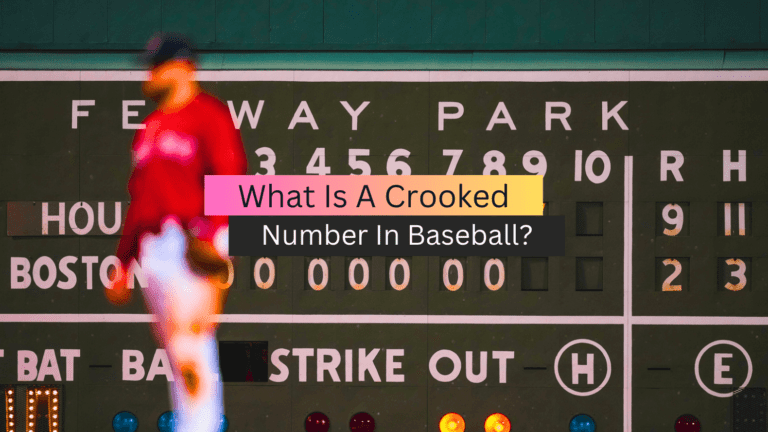Who Bats First in Baseball Home or Visitor?
In the captivating world of baseball, every aspect of the game has a purpose and strategy behind it. One intriguing question that often arises is: who has the privilege of batting first, the home team or the visitor? Today, we unravel this mystery and shed light on the game’s unwritten rules.
Contrary to popular belief, it is the visiting team that assumes the honor of stepping up to the plate first. From the first pitch to the final out, they take their turn at bat in the top half of every inning. Yet, baseball’s allure extends beyond this initial order of play, captivating fans with the anticipation of a home run, the artistry of a double play, and so much more.
In this article, we delve deeper into the reasoning behind the visitor’s advantage at the start of the game. We explore the strategic elements at play and the historical significance of this decision. So, join us as we unravel the intricacies of baseball’s opening act and discover why the visiting team leads the charge in this beloved sport.
The Home Team Advantage: Unleashing the Power of the Last Swing
Step into the hallowed grounds of a baseball stadium, where the roar of the crowd reverberates through the air, and the anticipation hangs palpably. It’s time to explore the home team advantage and the mighty significance of batting last in the grand theater of baseball. Brace yourself for a journey into the psyche of players, the statistical advantages, and the sheer magic that unfolds when the home team takes that final swing.
Home-field Advantage Explained: The Roar of the Home Crowd
Imagine yourself as a player, standing on the field, soaked in the cheers and chants of your passionate home crowd. There’s an undeniable energy, a wave of support that lifts your spirits and fuels your determination. This is the essence of the home-field advantage.
As the home team, the players feed off the energy of their devoted fans. The collective force of thousands of voices propels them forward, providing an intangible boost that can make all the difference in a game. The comfort and familiarity of their home turf only add to the psychological edge that comes with batting last.
Psychological Impact of Batting Last: A Psychological Game of Wits
Baseball, like any sport, is as much a mental battle as it is a physical one. The tradition of the home team batting last plays into the intricate psychology of the game. Picture this: the visitor has batted, the home team takes to the field, and their opponents are left pondering their upcoming at-bats.
This psychological dance can be a strategic advantage for the home team. As they take their positions, knowing they have the last swing, a subtle but potent pressure begins to mount on the visitor. It’s a psychological game of wits, as the home team aims to maintain their composure while subtly unsettling the opposition.
Statistical Advantage for the Home Team: The Numbers Don’t Lie
In the realm of sports, numbers often hold the key to unraveling mysteries. Baseball is no exception. When it comes to the home team advantage, statistics paint a compelling picture.
Statistical analyses have consistently shown that the home team, batting last, has a higher likelihood of winning games. The reasons for this advantage are multifaceted. From having the last chance to score in a tied game to the potential to mount a comeback in the final innings, the home team’s statistical edge cannot be ignored.
Moreover, in the late innings, when the pressure is at its peak, the home team has the luxury of making strategic decisions based on the scoreboard. This flexibility allows them to adapt their approach and exploit any weaknesses in the visitor’s pitching or defensive strategies.
Learn Also: best USSSA bats
The Visitor’s Perspective: Flipping the Script and Setting the Tone
In the vast arena of baseball, where the lines blur between home and away, we turn our attention to the daring and resilient visitors. Stepping onto unfamiliar territory, these valiant contenders hold the power to defy expectations, ignite the scoreboard, and leave an indelible mark on the game. Let us unveil the visitor’s perspective and unravel the strategies they employ to seize the spotlight from the home team’s grasp.
The Visitor’s Role in Setting the Tone: Disrupting the Status Quo
Imagine this: a team of warriors clad in visitor’s attire, marching into enemy territory with a glint of determination in their eyes. As the first to step up to the plate, the visitors possess an opportunity that is as exhilarating as it is challenging – setting the tone for the game.
The visitor’s perspective is one of audacity and the will to disrupt the status quo. Armed with offensive firepower, they aim to strike early and leave an imprint on the scoreboard. By scoring runs in the early innings, they not only grab the attention of the home team and their fans but also exert pressure on the opposing pitcher, forcing them to adjust their approach.
The Importance of Scoring Early: Capturing Momentum and Confidence
In the realm of baseball, momentum is a powerful force that can shape the course of a game. The visitor, aware of this truth, recognizes the vital importance of scoring early. By putting runs on the board in the opening innings, they seize control of the game’s narrative, instilling a sense of confidence within their ranks.
Early scoring serves as a catalyst, fueling the visitor’s energy and momentum. It has the potential to rattle the home team, disrupt their strategy, and sway the emotions of both players and fans alike. Every hit, every run becomes a statement, a testament to the visitor’s skill and resilience.
Strategies Employed by Visiting Teams: Navigating Unfamiliar Territory
When confronted with the challenge of batting first, visiting teams rely on a myriad of strategies to gain an advantage. They must adapt swiftly to the unique dimensions and characteristics of the opponent’s ballpark, finding the sweet spots where their strengths can shine.
From studying scouting reports to analyzing the tendencies of the home team’s pitcher, visiting teams craft meticulous game plans to exploit any weaknesses they perceive. The visitor’s lineup is carefully constructed, with batters strategically positioned to maximize their potential impact on the game’s early stages. Whether it’s unleashing power hitters to deliver an explosive start or employing skilled bunters to manufacture runs, the visitor’s strategy revolves around making an immediate impact.
Learn Also: best baseball bats under $300
The Impact of Pitching: Unleashing the Artistry on the Mound
In the realm of baseball, where heroes are forged and legends are born, one position stands above the rest – the pitcher. With each precise throw, they hold the power to shape the game, mesmerize the crowd, and dictate the flow of play. Join us now as we explore the awe-inspiring impact of pitching on the enigmatic batting order, delving into the strategies, strengths, and delicate balance between dominance on the mound and offensive prowess.
Pitcher’s Influence on Batting Order Decisions: The Chessboard of Strategies
Imagine standing on the mound, gripping the ball tightly, eyes locked on the batter. The pitcher, a strategic mastermind, holds a pivotal role in shaping the batting order decisions. Their unique strengths and style of play often dictate the lineup set forth by managers.
Managers analyze the pitcher’s repertoire, studying their strengths and weaknesses, and craft the batting order accordingly. A left-handed pitcher may face a lineup stacked with right-handed batters, seeking the advantage of the platoon advantage. Conversely, a pitcher renowned for their ability to induce ground balls may face a lineup of skilled infielders ready to make the plays. The pitcher’s impact stretches beyond their individual performance, shaping the very fabric of the game’s strategy.
Strategies Based on Pitcher’s Strengths: Unleashing the Arsenal
The art of pitching is a ballet of strategy, skill, and deception. A pitcher’s strengths become the foundation on which game plans are built. A flamethrower with an arsenal of overpowering fastballs may intimidate opponents, while a master of off-speed pitches can keep batters off balance.
Teams adapt their batting order to counter the pitcher’s strengths. Placing patient hitters at the top of the lineup can force a pitcher with control issues to throw more pitches, potentially wearing them down. Alternatively, stacking power hitters in the middle of the lineup can exploit a pitcher’s tendency to leave balls over the plate.
The delicate dance between pitcher and batter influences every decision made in the batting order. It is a strategic ballet, where each movement is carefully calculated to gain the upper hand in this thrilling game of skill.
Balancing Pitching and Batting Advantages: The Eternal Tug of War
In the eternal tug of war between pitching and batting, finding the delicate balance is key. A dominant pitcher can stifle even the most potent lineup, but a formidable offense can overcome even the most skilled hurler. Managers must navigate the fine line between maximizing their pitcher’s performance and capitalizing on their team’s offensive potential.
Determining the optimal batting order becomes an intricate dance of weighing the strengths of the pitcher against the abilities of the lineup. Should the manager stack the top of the order with contact hitters to counter a strikeout pitcher, or should they rely on power hitters to capitalize on any mistakes made by the opposing pitcher?
The dynamic interplay between pitching and batting lies at the core of the batting order puzzle. It is a constant push and pull, where managers seek the perfect harmony between the two, aiming to create a lineup that can withstand the challenges posed by the opposition.
Learn Also: Best Baseball Bats for Autographs
Modern Approaches and Analytics: Unveiling the Science Behind the Swing
Welcome to the era where data reigns supreme, and the game of baseball embraces the boundless possibilities offered by modern approaches and analytics. Step into the realm of advanced statistics, technological innovations, and strategic revolutions as we uncover the scientific marvels that have reshaped the batting order and propelled the sport into a new era of precision and calculated decision-making.
The Rise of Advanced Statistics: From Batting Average to Sabermetrics
Gone are the days when batting average and RBIs were the sole measures of a player’s prowess. The advent of advanced statistics, spearheaded by the sabermetrics revolution, has brought a new dimension to the understanding of player performance and the crafting of the batting order.
Enter the realm of metrics such as on-base percentage (OBP), slugging percentage (SLG), and weighted on-base average (wOBA). These metrics delve deeper into the intricacies of player contributions, accounting for factors such as walks, extra-base hits, and situational outcomes. By harnessing the power of data, teams can now make more informed decisions when constructing their batting order, maximizing the offensive potential of each player.
The Role of Technology: Unleashing Precision and Insights
Technology has woven itself into the fabric of baseball, revolutionizing player development, scouting, and game analysis. In the realm of batting order decisions, cutting-edge tools provide teams with unprecedented insights into player performance and opposing pitcher tendencies.
Enter the realm of PitchFX, Statcast, and TrackMan – systems that capture and analyze vast amounts of data, enabling teams to evaluate pitch movement, exit velocity, launch angles, and much more. Armed with this wealth of information, teams can optimize their lineup construction by matching up hitters with pitchers whose profiles they are best equipped to handle.
Additionally, advancements in video analysis and player tracking have empowered teams to study the minute details of player swings, identifying areas for improvement and tailoring individualized strategies to enhance performance. The marriage of technology and baseball has birthed a new era of precision and a scientific approach to the art of hitting.
The Rise of Platoon Advantage: Optimizing Matchups
In the realm of modern analytics, platoon advantage has emerged as a dominant force. By capitalizing on the statistical advantages of left-handed hitters against right-handed pitchers (and vice versa), teams can craft intricate platoon-based lineups to exploit matchups and gain a competitive edge.
The data-driven approach to lineup construction often involves mixing and matching players based on their performance against specific pitcher-handedness, maximizing the likelihood of offensive success. This tailored approach allows managers to optimize the strengths of their lineup and counter the opposing team’s pitching staff strategically.
Balancing Tradition and Innovation: The Art of Adapting
While modern approaches and analytics have made a profound impact on baseball, it is essential to strike a delicate balance between tradition and innovation. The strategic foundations that have withstood the test of time still hold significance, as the human element of the game cannot be fully quantified.
Managers and teams must navigate this intricate landscape, drawing from the rich tapestry of tradition while embracing the insights offered by modern analytics. The art lies in knowing when to trust the data and when to rely on intuition and experience, as the two worlds intertwine to shape the batting order decisions that define the game.
Learn Also: best baseball bats for 8 year olds
Experimental Changes and Future Possibilities: Redefining the Boundaries of the Batter’s Box
Buckle up, baseball enthusiasts, as we embark on a thrilling journey into the realm of experimental changes and future possibilities that may reshape the very essence of the batting order. Prepare to witness the game push its boundaries, challenge conventions, and embrace innovations that could revolutionize the art of hitting. Join us as we explore the uncharted territory where tradition meets evolution, and the possibilities seem infinite.
The Quest for Efficiency: Time Constraints and Pitch Clocks
In an era where time is of the essence, the quest for efficiency has led to experimental changes aimed at expediting the pace of play. The introduction of pitch clocks, for instance, seeks to enforce stricter time limits on pitchers, ensuring a more fluid and fast-paced game. As these changes continue to be tested and refined, their potential impact on the batting order cannot be ignored.
A faster game tempo may lead to adjustments in lineup construction, favoring hitters who can thrive in a more rapid-fire environment. The ability to quickly adapt to pitch variations and make decisive swings could become even more prized, reshaping the strategies employed by managers as they construct their batting orders.
Dynamic Lineups and Matchup Variations: Embracing Flexibility
The traditional notion of a static batting order may be challenged by the concept of dynamic lineups, where the order can be adjusted in real time based on matchups and situational factors. The future holds the possibility of managers making on-the-fly changes to optimize offensive output.
By embracing flexibility, managers can tailor the batting order to exploit specific pitcher weaknesses or capitalize on in-game developments. This could lead to a more adaptive approach, where players are slotted into positions based on their abilities to handle particular pitch types or excel in specific situations, breaking free from the constraints of predetermined lineups.
Data-Driven Personalized Strategies: Unleashing Individual Potential
The marriage of data and player development is on the horizon, paving the way for personalized strategies that maximize the potential of each batter. As teams delve deeper into player analytics, they can uncover nuanced insights that unlock hidden talents and tailor approaches to individual strengths.
Imagine a future where each batter’s profile is meticulously analyzed, and game plans are customized to optimize their performance. From pitch selection to swing mechanics, data-driven personalized strategies can reshape the batting order, allowing players to showcase their abilities in a way that capitalizes on their unique skill sets.
Technology and Virtual Reality: Redefining Training and Preparation
The integration of technology and virtual reality holds tremendous potential in revolutionizing player training and preparation. Imagine batters stepping into virtual environments, facing simulated pitchers with impeccable accuracy, and honing their skills in a controlled yet realistic setting.
Virtual reality training can provide batters with invaluable opportunities to study and adapt to various pitcher styles, sharpening their decision-making and timing. This immersive experience could have a profound impact on lineup construction, as managers gain deeper insights into player performance and the ability to assess readiness against specific pitcher profiles.
Conclusion
In the captivating world of baseball, the question of who bats first, the home team or the visitor, has always sparked intrigue and curiosity among fans. While the answer may seem straightforward to seasoned enthusiasts, the rules and traditions of this beloved sport often weave unexpected narratives.
As the sun dips below the horizon, casting long shadows upon the hallowed field, the stage is set for an exhilarating clash between two titans of the game. The anticipation hangs in the air, as players and spectators alike eagerly await the answer to this age-old query.
Ultimately, whether it be the thunderous crack of the bat echoing through the stands or the mesmerizing dance of the pitcher and batter, the spirit of the game prevails, reminding us that it is not the order in which they step up to the plate that truly matters, but the undying passion and skill with which they play the game.
So, dear fans, let the game begin, for it is here, in this timeless contest, that legends are born and memories are etched in the annals of baseball history.
FAQs
Who bats first in a baseball game?
In a baseball game, the team that bats first is determined by a coin toss or a pre-game decision made by the home team. The team that wins the coin toss or is designated as the home team will typically choose to bat first. The opposing team will then assume the role of the defense and take the field.
Does the visiting team bat first?
Yes, in baseball, the visiting team typically bats first. The home team, as the host, gets the advantage of batting last in the game. This allows them the opportunity to potentially score the winning run in the final inning. So, the visiting team takes the first turn to bat, and the home team assumes the role of defense initially.
Why are bats last in a baseball inning?
In baseball, the team that bats last, also known as the home team, has the advantage of batting in the final inning. This is because the home team has the opportunity to observe the number of runs scored by the visiting team in their half of the inning. By batting last, the home team knows exactly how many runs they need to score or how many they can afford to concede in order to win or tie the game. This strategic advantage adds an element of suspense and strategy to the game, making it more exciting for players and fans alike.







